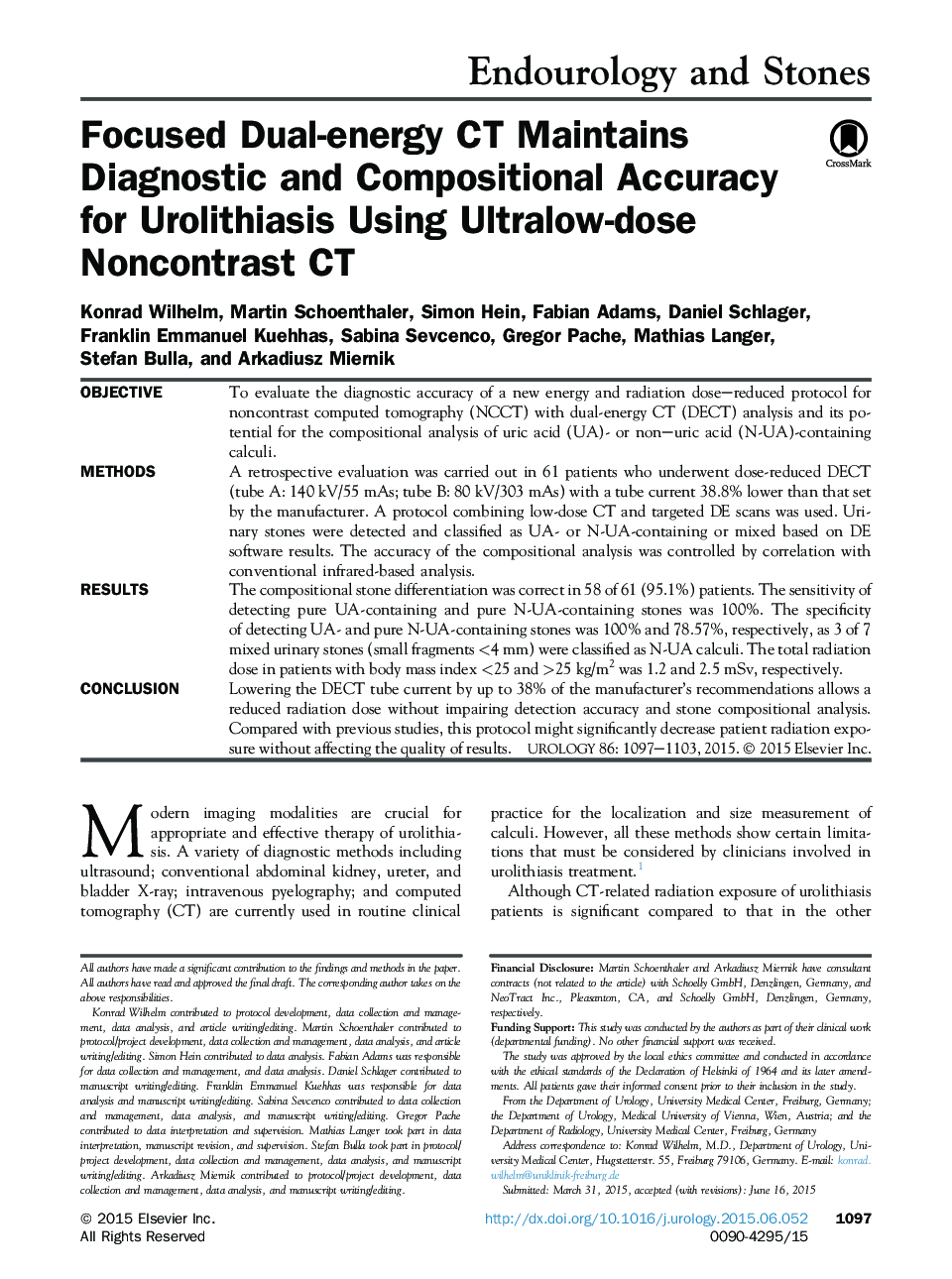| Article ID | Journal | Published Year | Pages | File Type |
|---|---|---|---|---|
| 6166606 | Urology | 2015 | 7 Pages |
ObjectiveTo evaluate the diagnostic accuracy of a new energy and radiation dose-reduced protocol for noncontrast computed tomography (NCCT) with dual-energy CT (DECT) analysis and its potential for the compositional analysis of uric acid (UA)- or non-uric acid (N-UA)-containing calculi.MethodsA retrospective evaluation was carried out in 61 patients who underwent dose-reduced DECT (tube A: 140 kV/55 mAs; tube B: 80 kV/303 mAs) with a tube current 38.8% lower than that set by the manufacturer. A protocol combining low-dose CT and targeted DE scans was used. Urinary stones were detected and classified as UA- or N-UA-containing or mixed based on DE software results. The accuracy of the compositional analysis was controlled by correlation with conventional infrared-based analysis.ResultsThe compositional stone differentiation was correct in 58 of 61 (95.1%) patients. The sensitivity of detecting pure UA-containing and pure N-UA-containing stones was 100%. The specificity of detecting UA- and pure N-UA-containing stones was 100% and 78.57%, respectively, as 3 of 7 mixed urinary stones (small fragments <4 mm) were classified as N-UA calculi. The total radiation dose in patients with body mass index <25 and >25 kg/m2 was 1.2 and 2.5 mSv, respectively.ConclusionLowering the DECT tube current by up to 38% of the manufacturer's recommendations allows a reduced radiation dose without impairing detection accuracy and stone compositional analysis. Compared with previous studies, this protocol might significantly decrease patient radiation exposure without affecting the quality of results.
